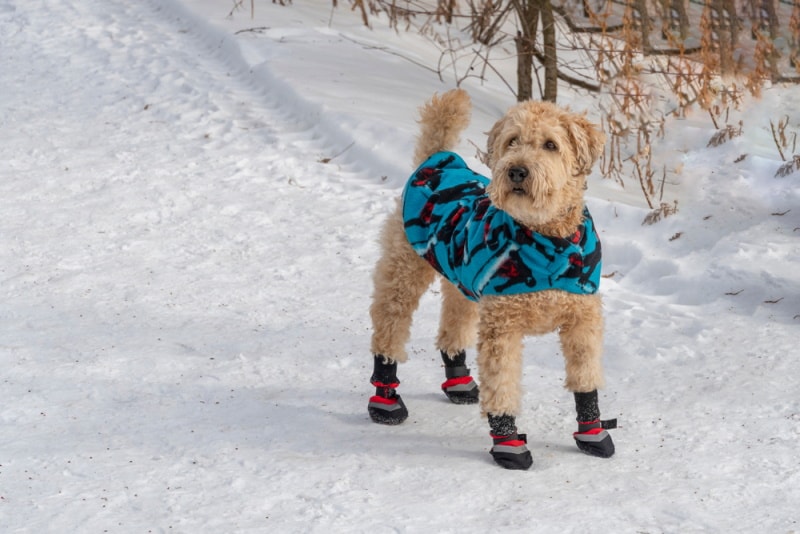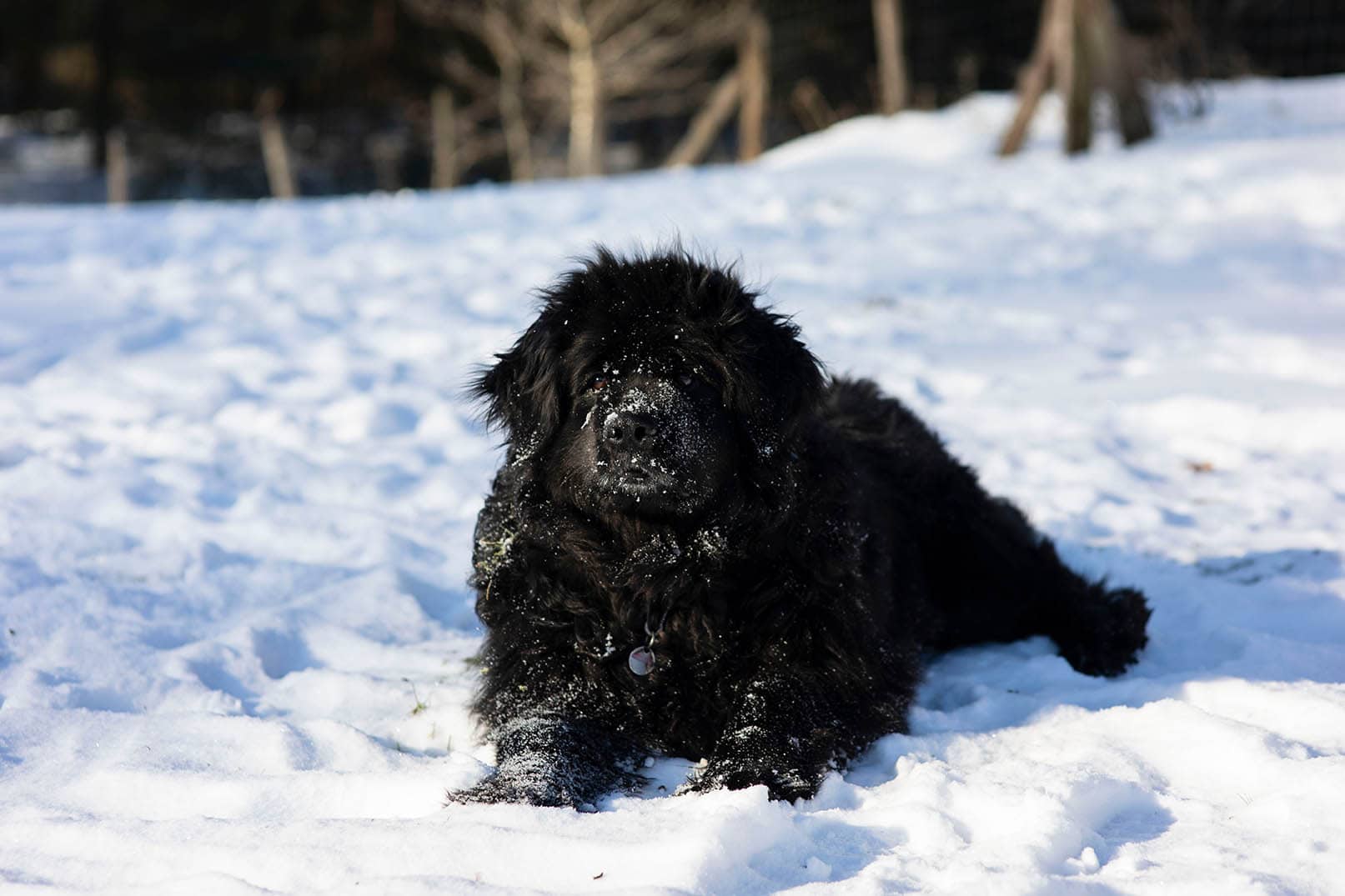Click to Skip Ahead
Many dogs are equipped for chilly winter temperatures. They have full coats and double layers that act as a natural insulator. But how cold is too cold? Can your dog get frostbite, or can they withstand even the coldest temperatures to no consequence?
Yes, dogs can get frostbite, and we will explain how they get it, how you can prevent it, and what signs to look for.
What Is Frostbite?
Frostbite occurs when the skin and other soft tissues are damaged due to extreme cold. When the body is exposed to low temperatures, blood flow is redirected away from the body’s extremities and towards vital organs. The cold temperature and lack of blood flow to places like the ears, paws and tail can cause tissues to freeze , leading to severe damage.
Mild frostbite is generally easily treated but advanced frostbite can be very difficult. Frostbite is often accompanied or followed by hypothermia, a dangerous condition when the core body temperature drops too low.
If you have come in contact with an animal that has been left out in cold temperatures and you suspect they have frostbite, it’s best to get them to an indoor enclosure as soon as possible.
When to See a Vet
Before we even get started with frostbite and how to identify it, we want to recommend reaching out to your veterinarian. If you think that your dog might have frostbite, they are the first individuals that should be contacted regarding the issue.
Your vet might tell you some things to look for at home or advise that you bring in your pet for an examination. Our information and advice is in no way a substitute for professional medical advice.

If you need to speak with a vet but can’t get to one, head over to PangoVet. It’s an online service where you can talk to a vet online and get the personalized advice you need for your pet — all at an affordable price!
Where Can Dogs Get Frostbite?
Frostbite most commonly occurs in the extremities exposed to the elements, such as the nose, ears, paw pads, and tail. For intact male dogs, the scrotum can also be at risk. If your pup is wet, it’s more likely to occur.
Clinical Signs of Frostbite
You can likely identify frostbite by looking visually at the affected area.
- Skin discoloration to a blue/gray color
- Extreme coldness
- Pain to touch
- Swelling
- Skin blisters
- Blackened or dead skin
As warmth returns, the area can become very red and inflamed. It can take several days to fully appear. Eventually, the affected areas can become necrotic. Tissues begin to die, causing the affected skin to change color to dark blue or black.
This is a period of time when infection can occur. You may notice a foul smell accompanied by pus and other signs of infection.
Diagnosis of Frostbite
Your vet can usually determine that your dog has frostbite simply by a physical examination. In addition to a physical exam, they may test urine and blood to look for damage to internal organs as well.

Treatment for Frostbite
If your dog has frostbite, medical attention should be your first line of action. However, until you are able to receive first-hand veterinary care, here are some suggestions.
If you are outside and cannot get the dog to a properly warmed space, do not attempt to warm up the frostbitten areas. This can actually be counterproductive and make it worse by warming and then refreezing. Try not to touch or rub the affected area either, as irritation could lead to further tissue damage.
If you are in the house, you must keep them in a warm, safe environment. If your dog could have hypothermia, try to keep their body warm. Do not try to heat them up too quickly by putting them in hot water or using a hair dryer. This extreme temperature shift could be counterproductive. Instead, wrap them in warm dry towels and blankets. You can place warm hot water bottles wrapped in towels near them, but not directly on their body.
The best treatment for frostbite is to get them into the vet immediately for emergency care. Ensure the dog is warm on the way to the vet, and never give them any type of medication unless your vet has advised you to do so over the phone. Your vet will discuss the best treatment plan for your dog depending on the extent of their injuries.
What Breeds Are Susceptible to Frostbite
Any dog can get frostbite in the right conditions. However, hairless breeds or single-coat breeds are twice as likely. Hairless breeds are very sensitive to even moderate amounts of sunlight, so you can imagine how much freezing temperatures could do to their bare skin.
That would be comparable to a human being going outside in subzero temperatures without gloves or protective gear.
- Chihuahua
- Boxer
- Chinese Crested
- Greyhound
- Great Dane
- Boston Terrier
- Doberman Pinscher
- Xoloitzcuintli
- Whippet
- Miniature Pinscher
- Italian Greyhound
Small dogs, puppies and elderly dogs are also at increased risk.

Risky Health Conditions
In addition to breed, some medical conditions can make frostbite more likely to affect your dog, including:
- Heart disease
- Diabetes
- Conditions that cause reduced blood flow to the extremities
How to Protect Your Dog from Frostbite
Here are some ways to keep your pup warm in the winter.
- Make outside trips quick in frigid temperatures
- Never leave your dog outside unattended for long periods
- Steer clear of dry ice, salt, and other seasonal deicing agents
- Invest in dog boots and put layers on susceptible pooches

Conclusion
Even though our pups have a built-in layer of protection, they can still be susceptible to the cold weather. That is why it is so imperative to make sure that we are preparing our particular dog breed for the outdoor elements.
If you suspect that your dog might have frostbite or you want to be sure after a lengthy trip outside, contact your vet right away. They will be able to give you the proper steps to take and advise you on when it’s best to come in.
Featured Image Credit: Alla’s Photography, Shutterstock












